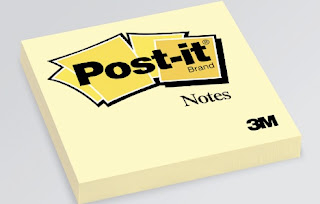Founded in 1902, 3M has come to epitomize American
ingenuity. Over the course of a century, its prolific inventors have churned
out breakthrough products that have become part of Americana. From Scotch Tape
to Scotchguard Protector and Thinsulate Insulation to the omnipresent Post-it
Notes.
What made 3M so innovative is the reason being, 3M set
itself a goal of generating 30% of its total revenues from new products it had
introduced in the preceding five years. This bold goal is known as the New
Product Vitality Index (NPVI) within 3M. This helps the company to constantly
invent and reinvent products.
The 3M culture helps create and cultivate new ideas. To be
one of the most innovative companies in the world it has launched one of the
most radical initiatives – the 15% program for its staff. This program allows
3M employees to use 15% of their paid work time to pursue their dream projects.
3M is also very supportive towards its employees with their projects. Some of
these dream projects are a commercial success and some are not. One of these
dream projects was the Post-it Notes, which was a success world over.
After proving its mettle as an exceptional corporate
innovator for nearly a century, 3M experienced declining performance in the
late 1990s. The stock prices took a hit and its sales and profits began to
decline. That’s when 3M hired Jim McNerney as the CEO. McNerney brought in
management discipline and streamlined the bloated firm’s cost structure by
implementing Six Sigma management techniques.
This significantly boosted 3M’s profitability. Its operating
margins shot up from 17% in 2001 to 23% in 2005. The highly structured Six
Sigma process with emphasize on predictability and sameness worked wonders. But
the same structured approach had the opposite effect when it came to R&D
department. Six Sigma arguably choked 3M’s free flowing Jugaad creativity. In
the process, Six Sigma failed to tap into the psychological capital on 3M’s
innovators whose ingenuity and resilience to adversity had been built up over
several decades.




Comments
Post a Comment